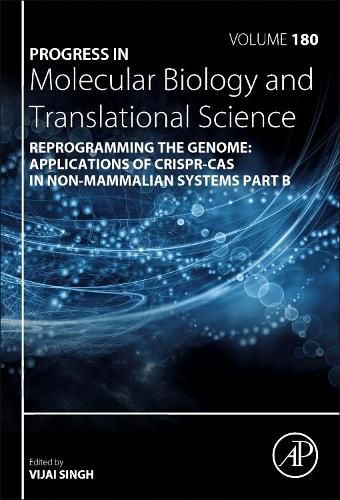Readings Newsletter
Become a Readings Member to make your shopping experience even easier.
Sign in or sign up for free!
You’re not far away from qualifying for FREE standard shipping within Australia
You’ve qualified for FREE standard shipping within Australia
The cart is loading…






Reprogramming the Genome: Applications of CRISPR-Cas in Non-mammalian Systems Part B, represents the collation of chapters written by eminent scientists worldwide. CRISPR-Cas9 system is an RNA-mediated immune system of bacteria and archaea that protects from bacteriophage infections. It is one of the revolutionized technologies to uplift biology to the next stages. It is a simple, rapid, precise, and cost-effective tool for genome editing and regulation of a wide range of organisms. It has gained scientific and public attention worldwide. This volume mainly covers insect cell line, protozoans, zebrafish, drosophila, CRISPRi, patents as well as technology transfer, and many more. This book is a key source of information available in a single volume. This book will be useful for not only beginners in genome engineering, but also students, researchers, scientists, policymakers, and stakeholders interested in harnessing the potential of reprogramming of the genomes in several areas.
$9.00 standard shipping within Australia
FREE standard shipping within Australia for orders over $100.00
Express & International shipping calculated at checkout
Reprogramming the Genome: Applications of CRISPR-Cas in Non-mammalian Systems Part B, represents the collation of chapters written by eminent scientists worldwide. CRISPR-Cas9 system is an RNA-mediated immune system of bacteria and archaea that protects from bacteriophage infections. It is one of the revolutionized technologies to uplift biology to the next stages. It is a simple, rapid, precise, and cost-effective tool for genome editing and regulation of a wide range of organisms. It has gained scientific and public attention worldwide. This volume mainly covers insect cell line, protozoans, zebrafish, drosophila, CRISPRi, patents as well as technology transfer, and many more. This book is a key source of information available in a single volume. This book will be useful for not only beginners in genome engineering, but also students, researchers, scientists, policymakers, and stakeholders interested in harnessing the potential of reprogramming of the genomes in several areas.